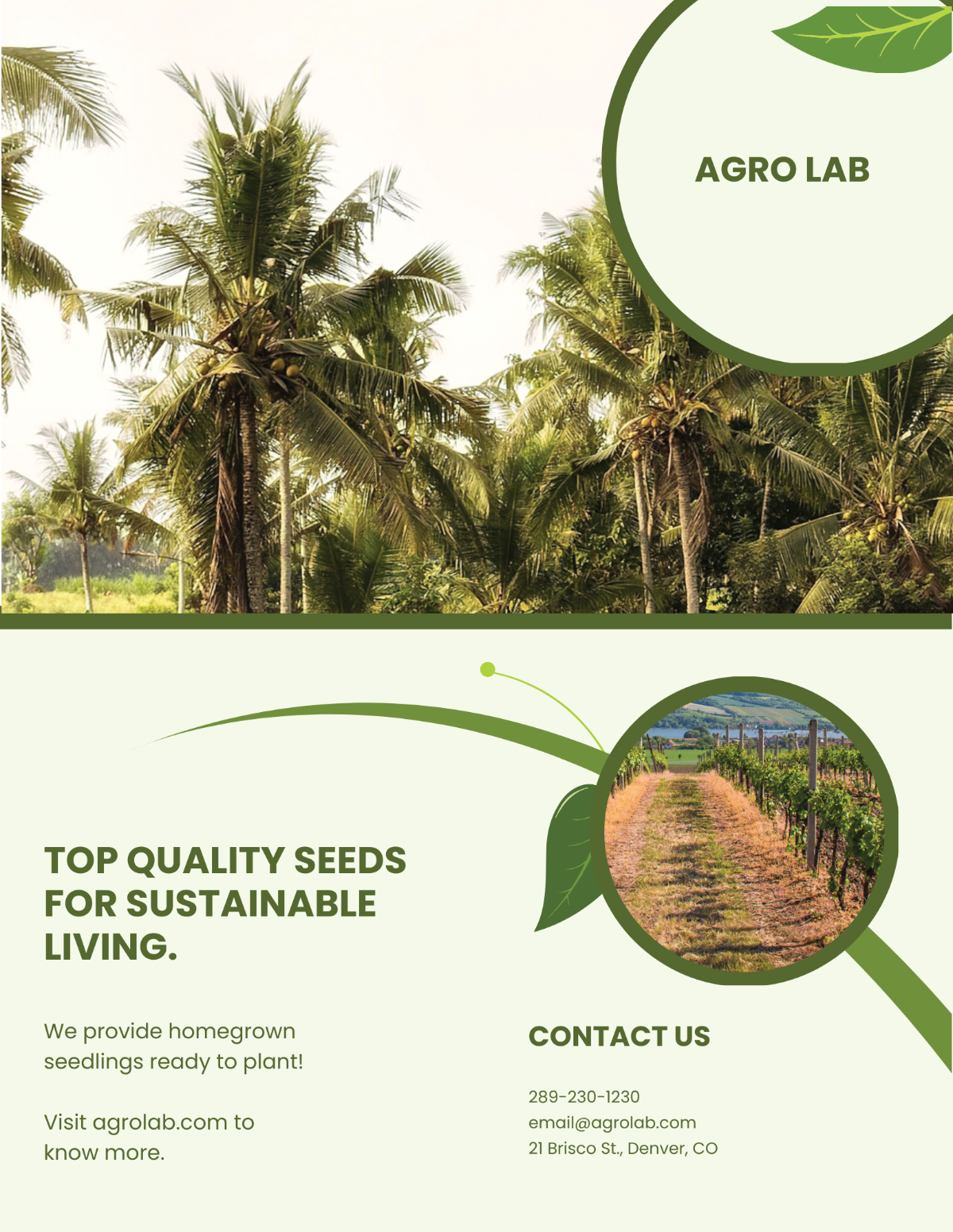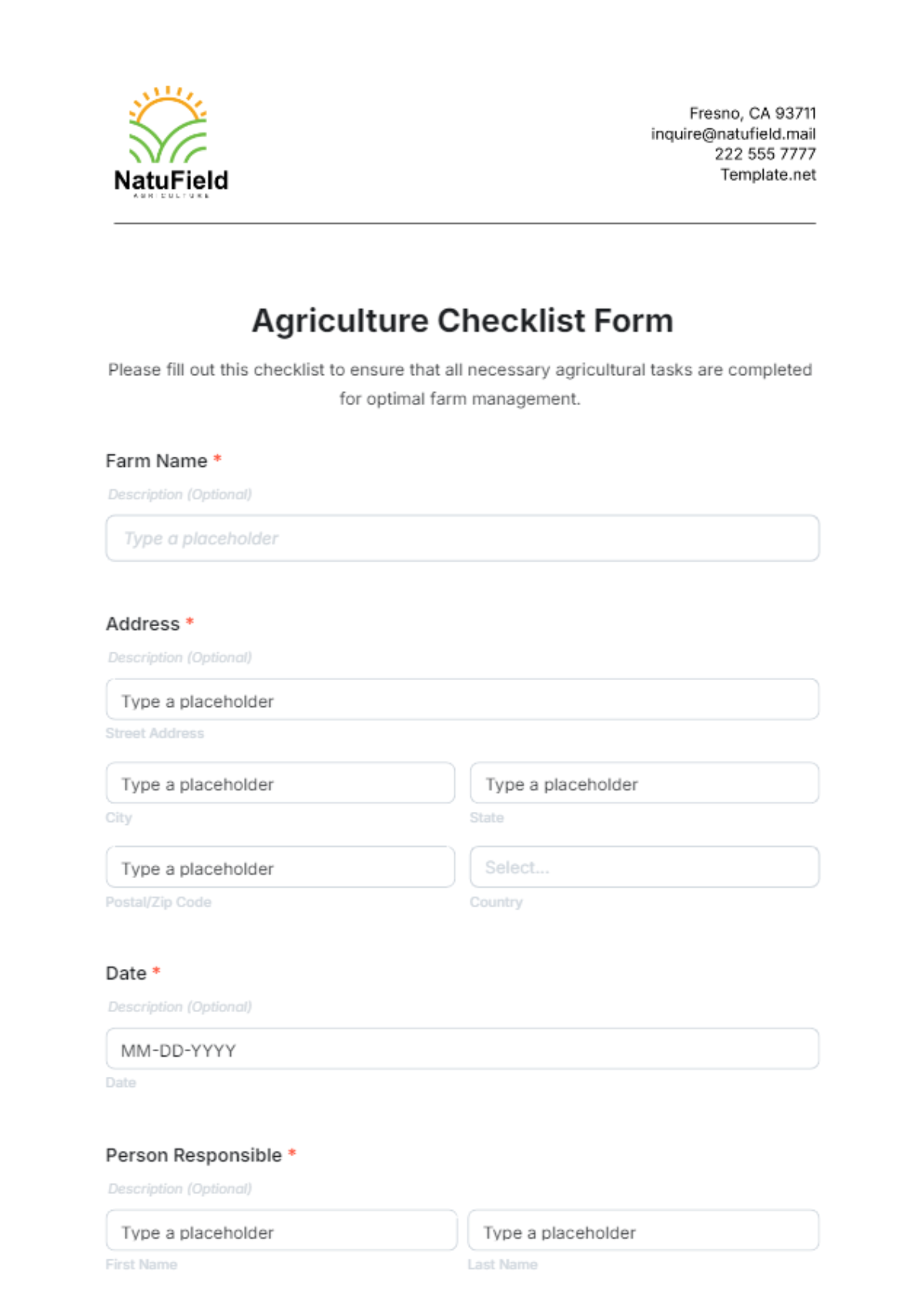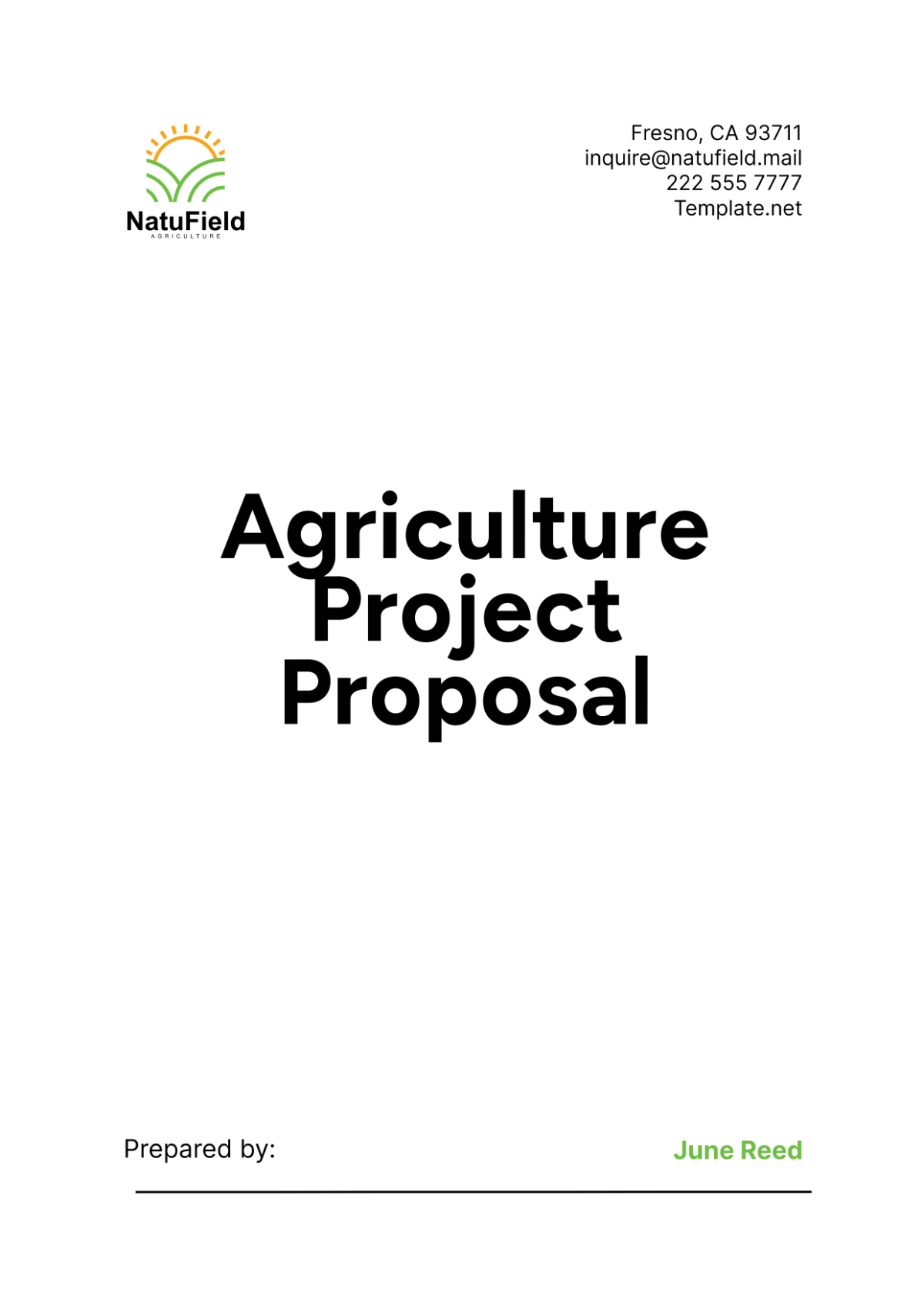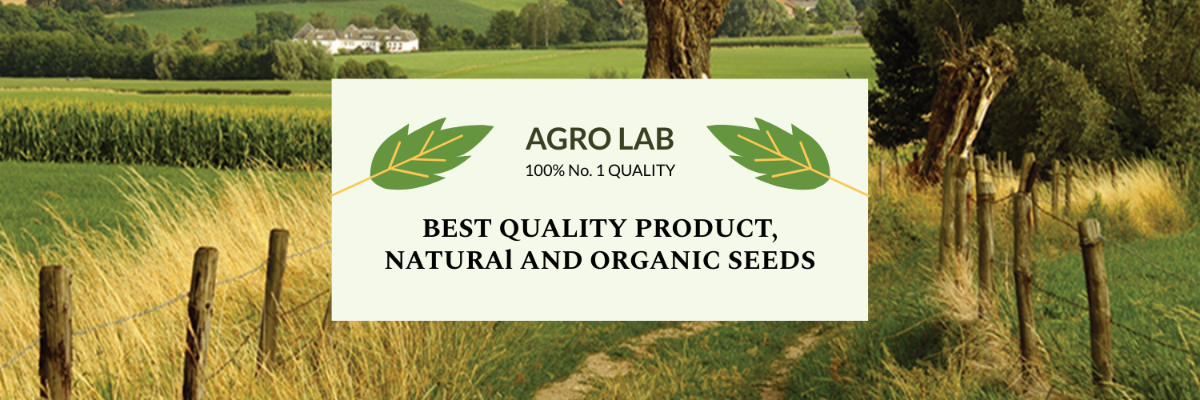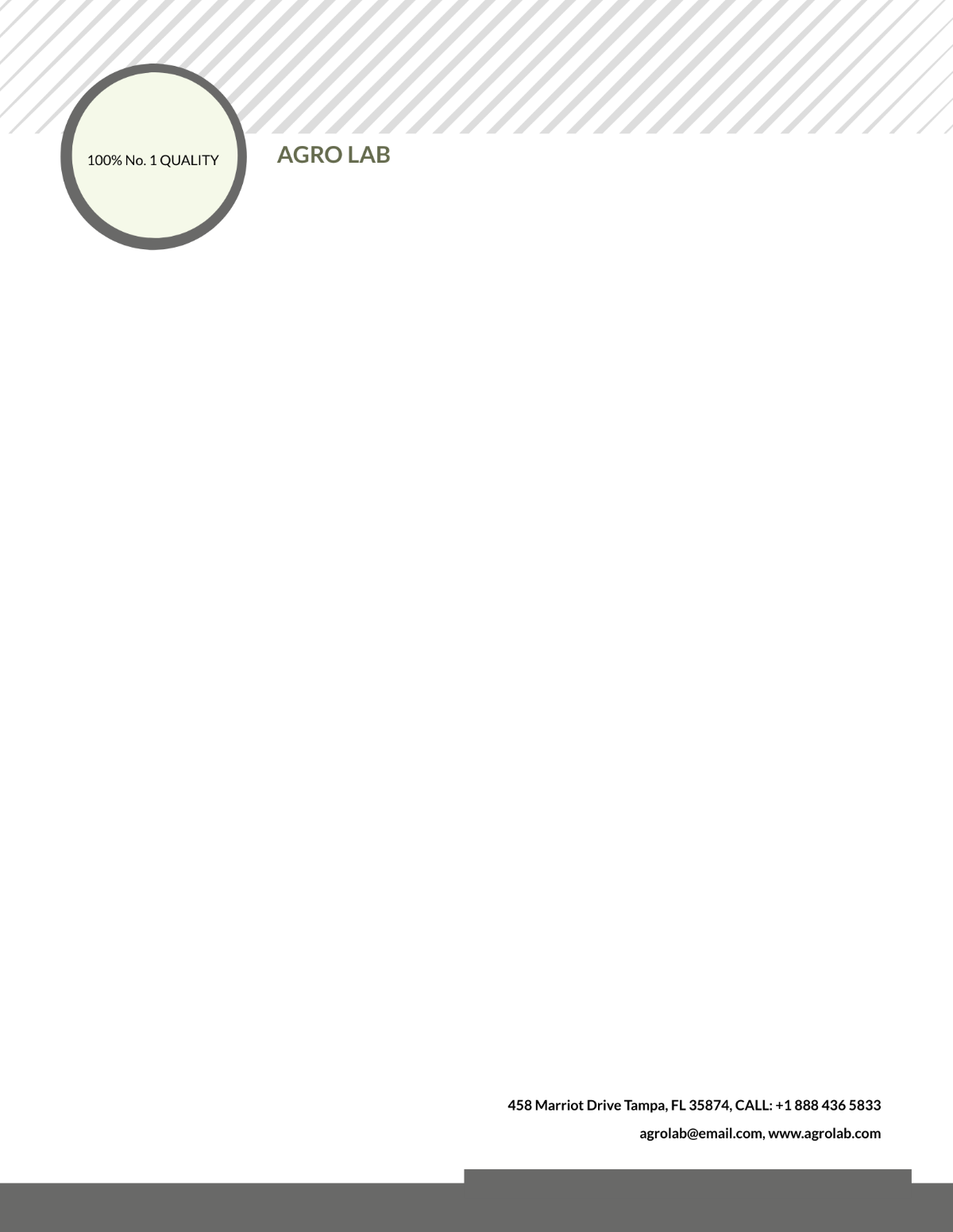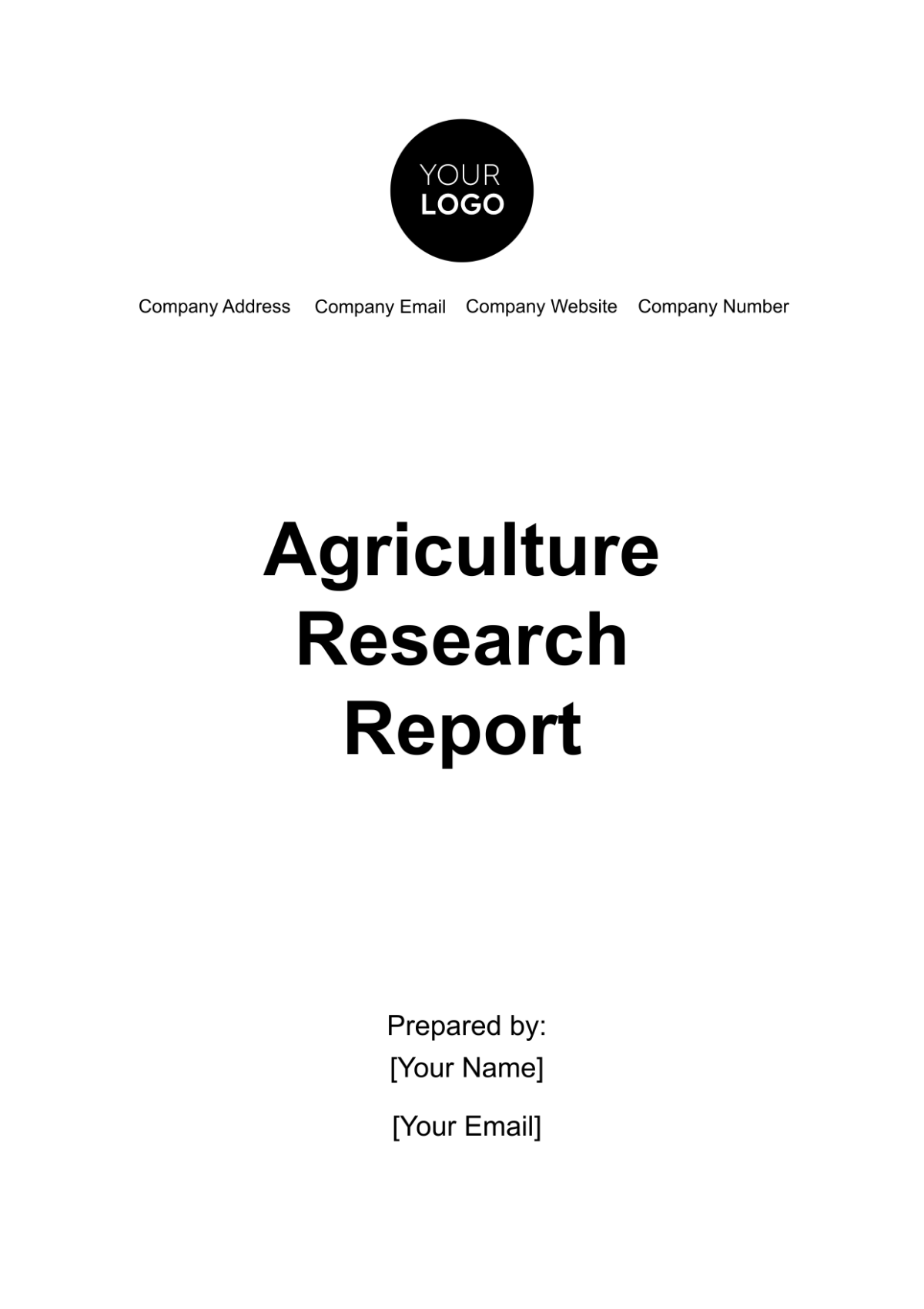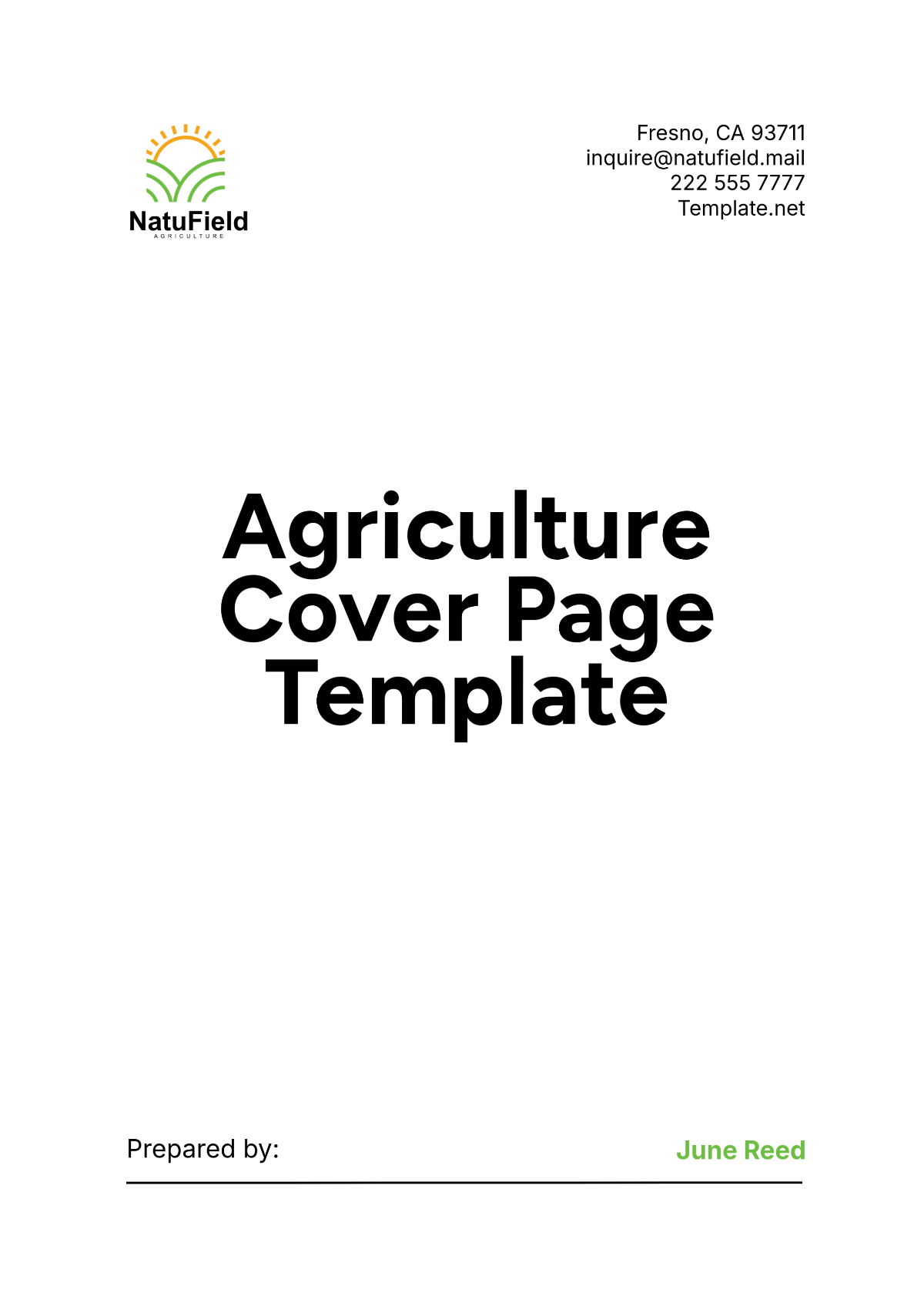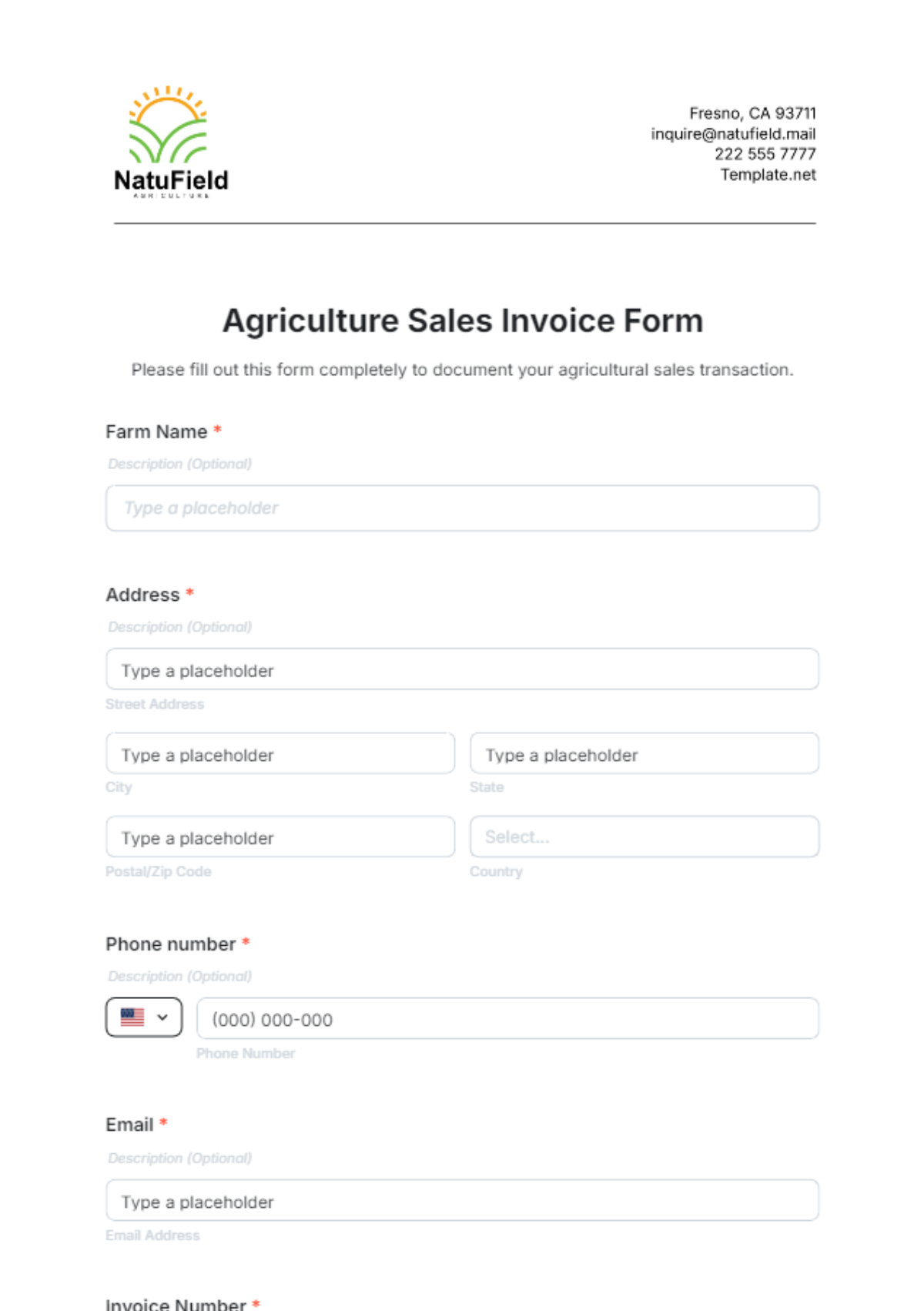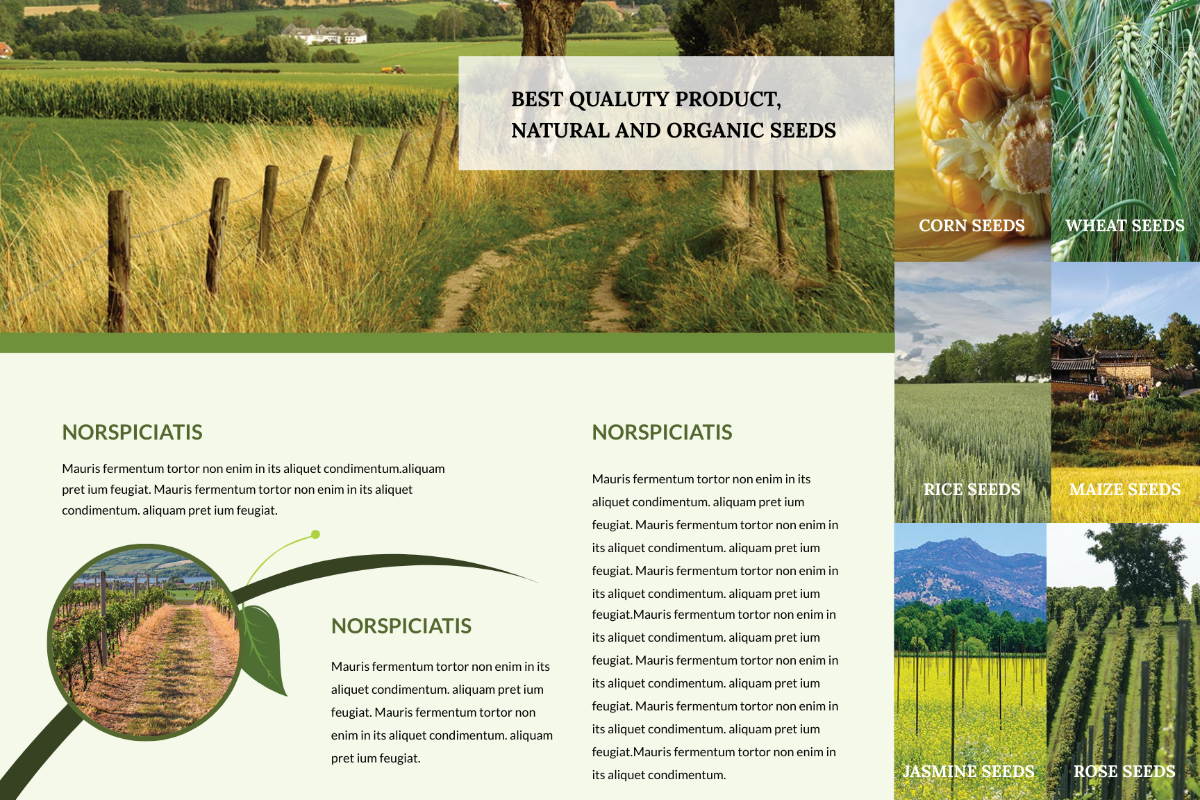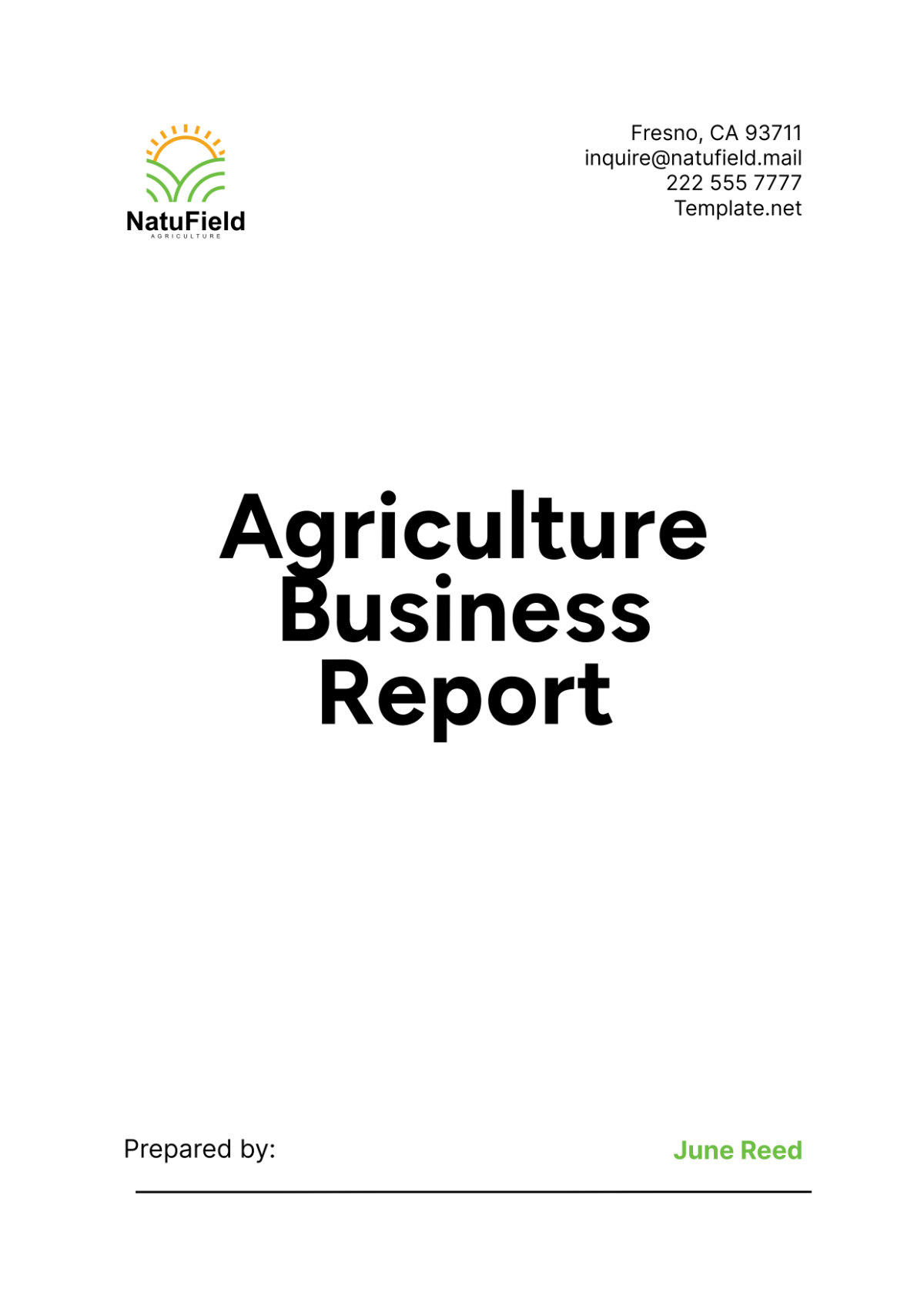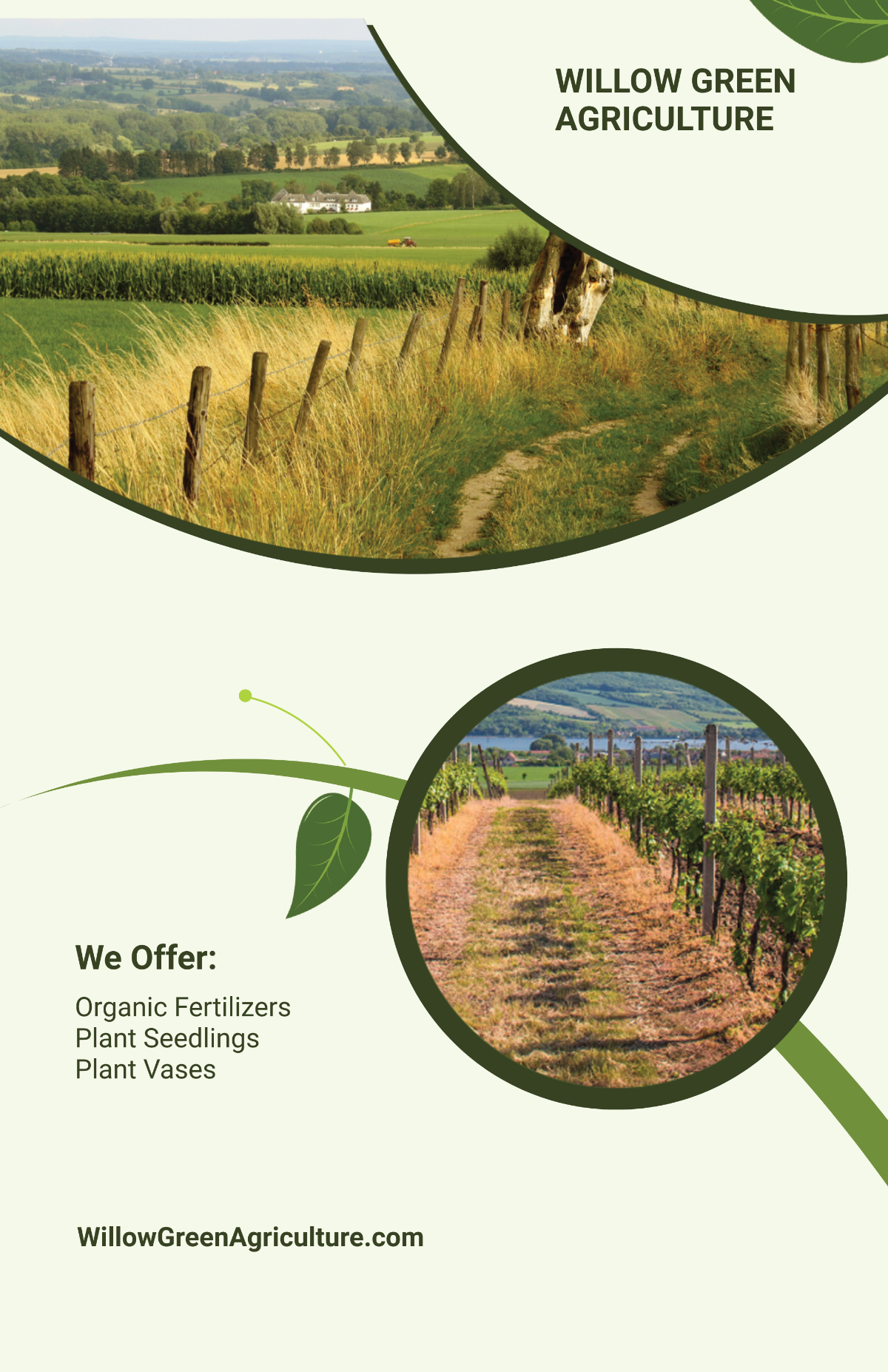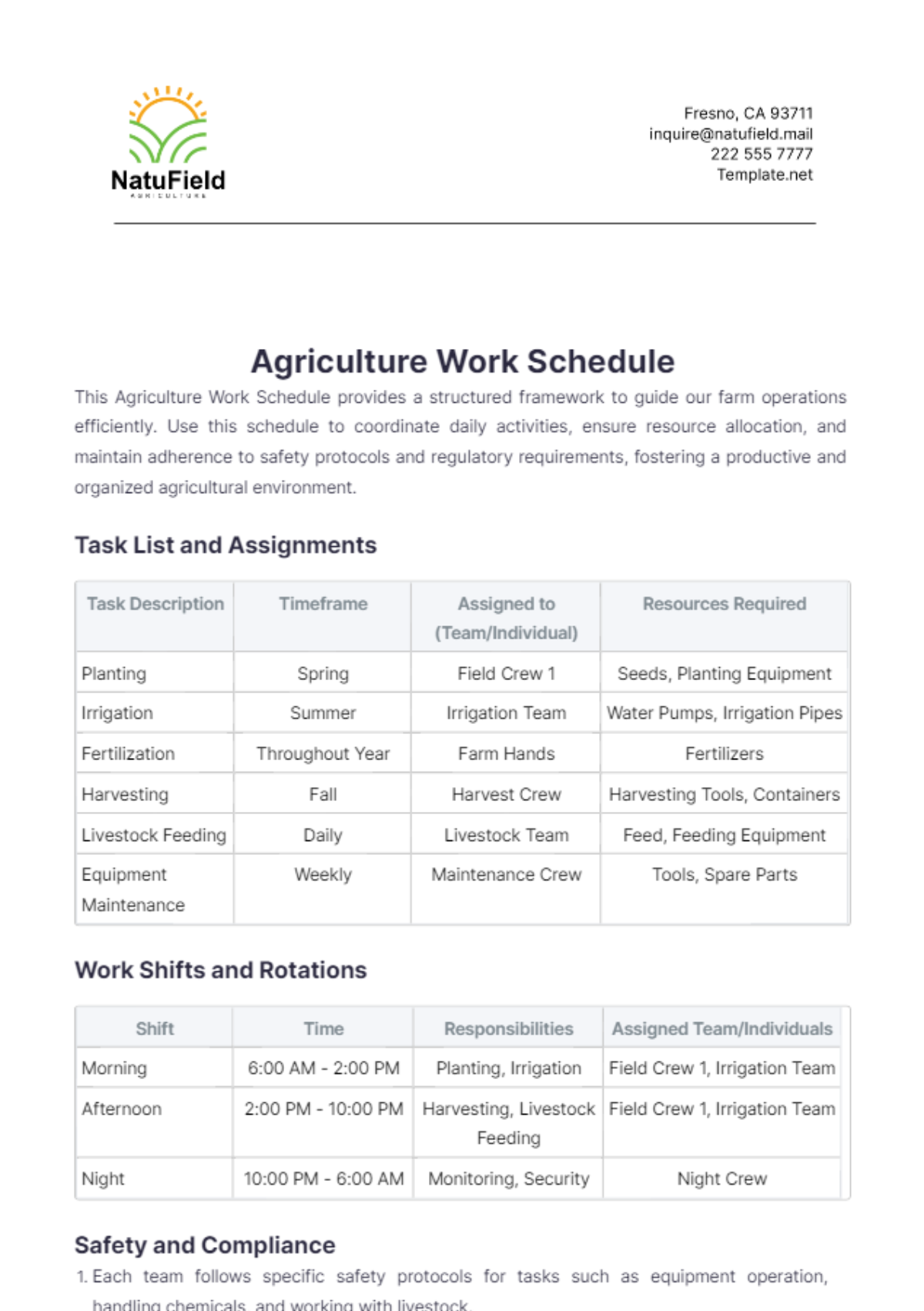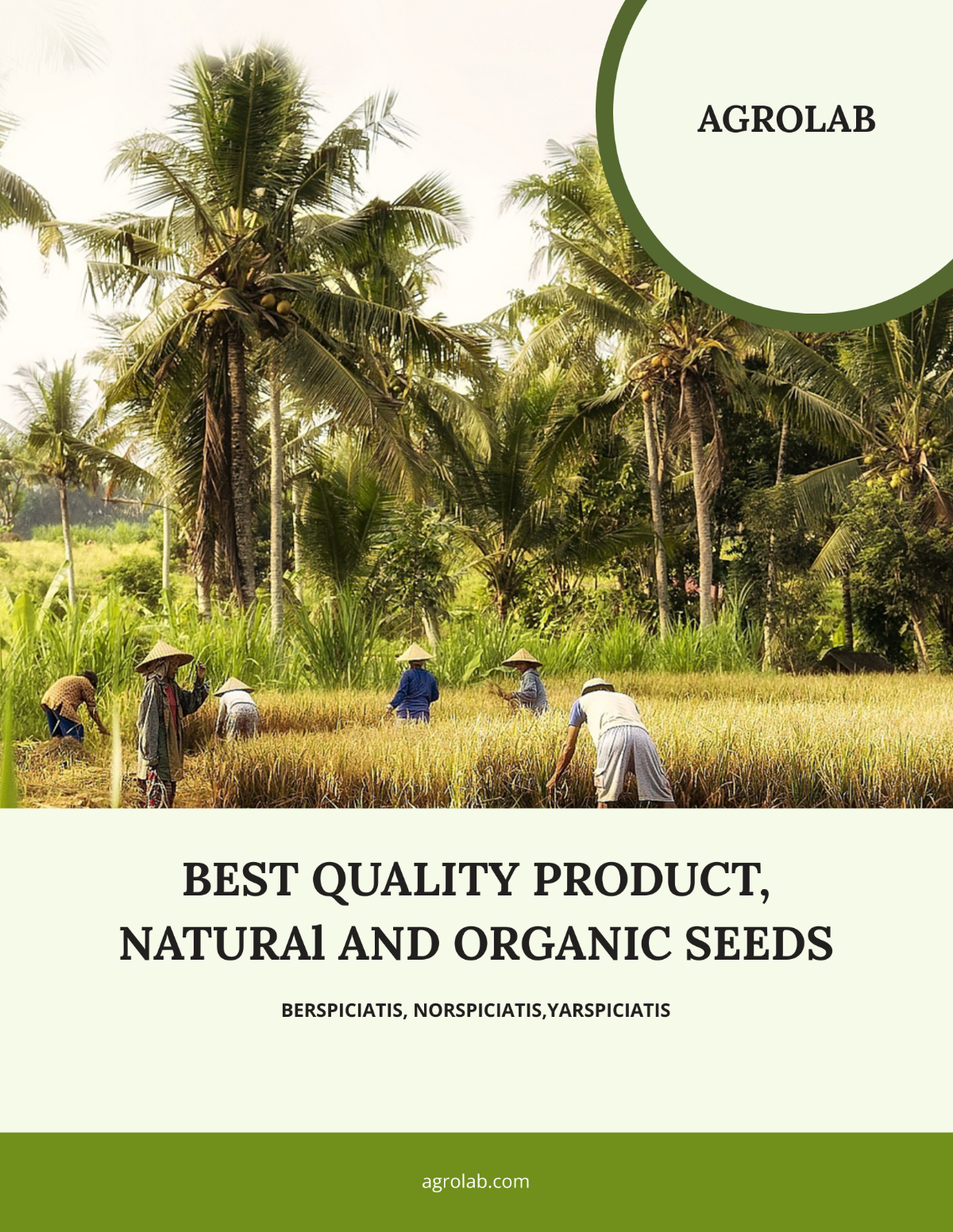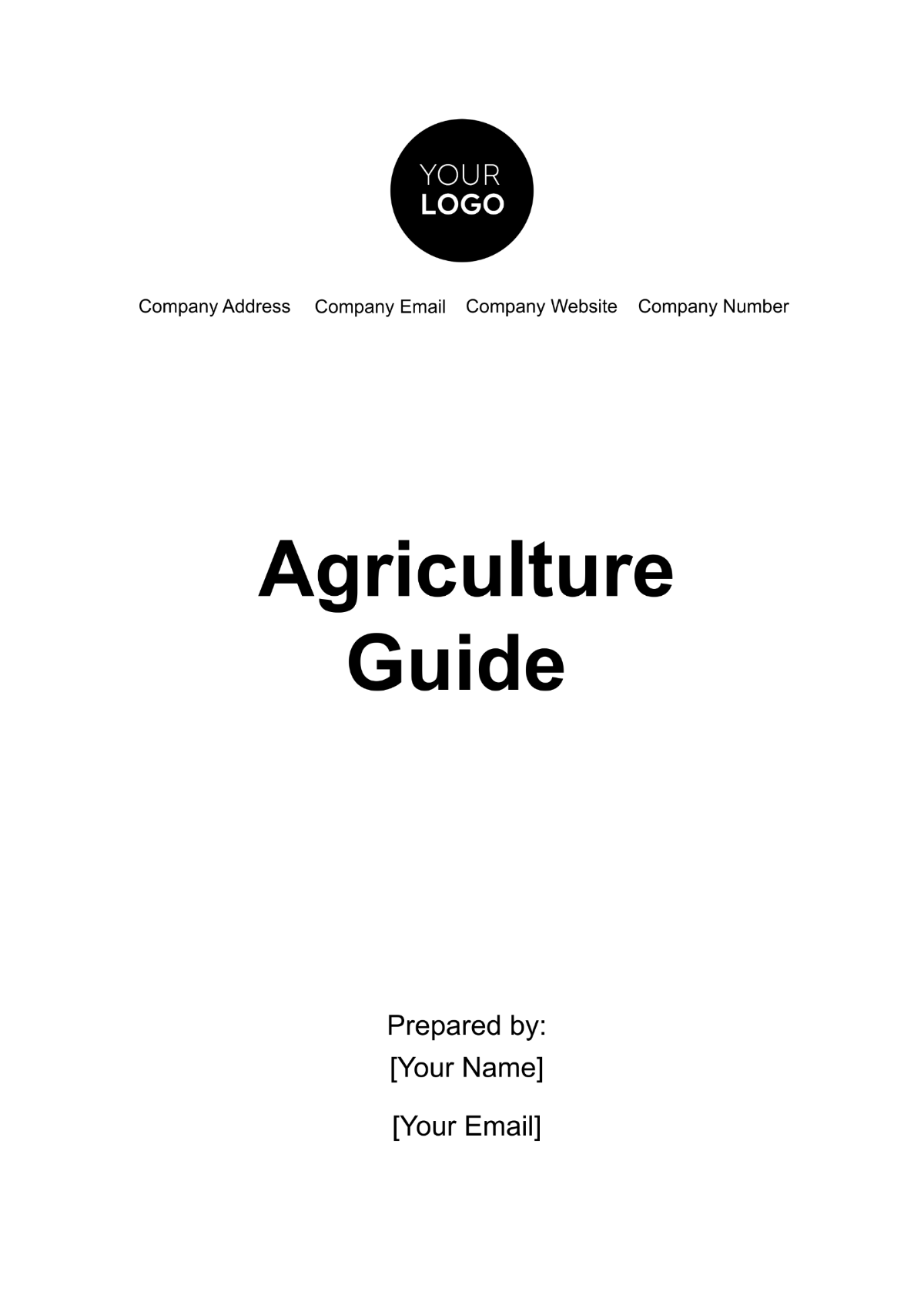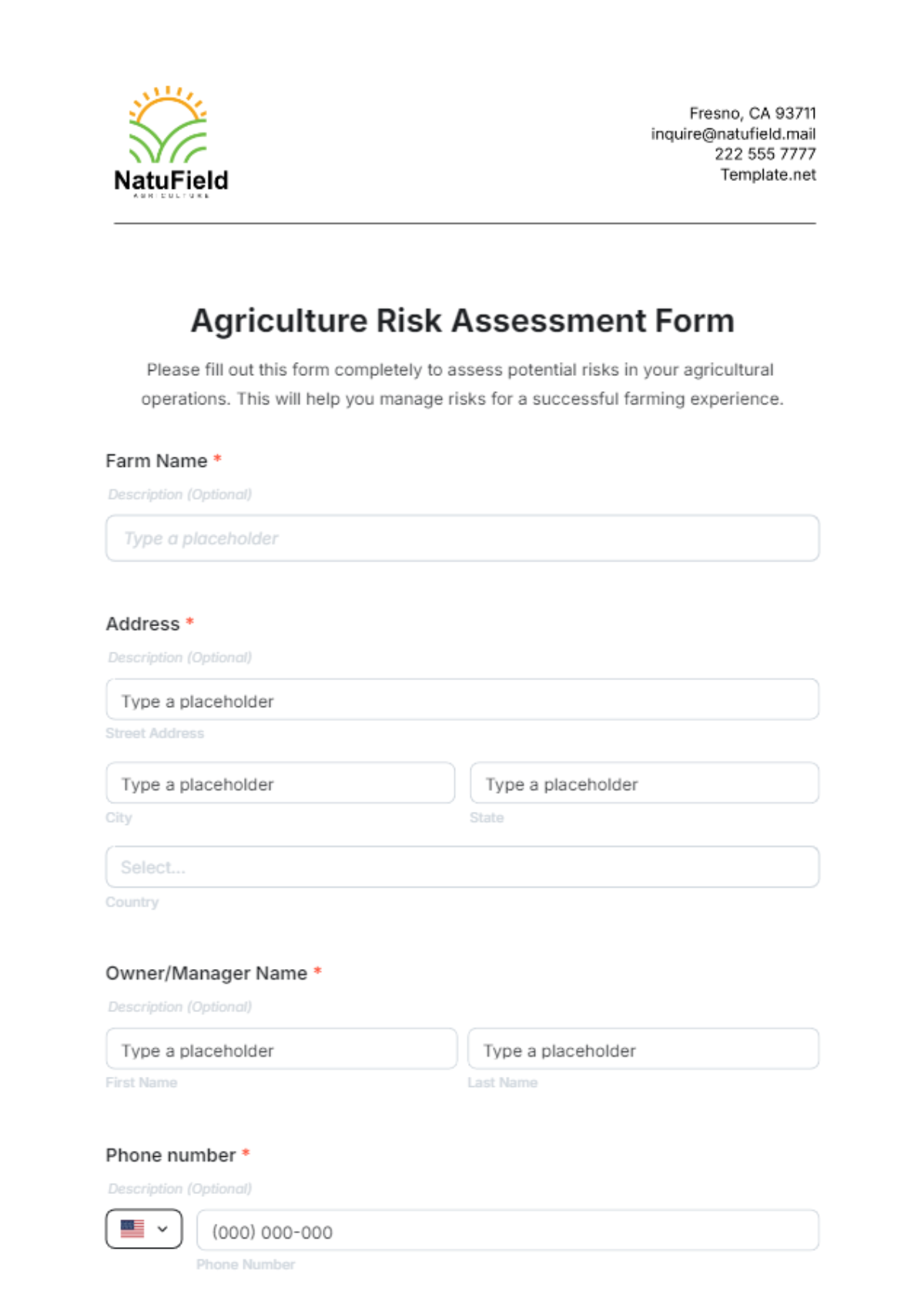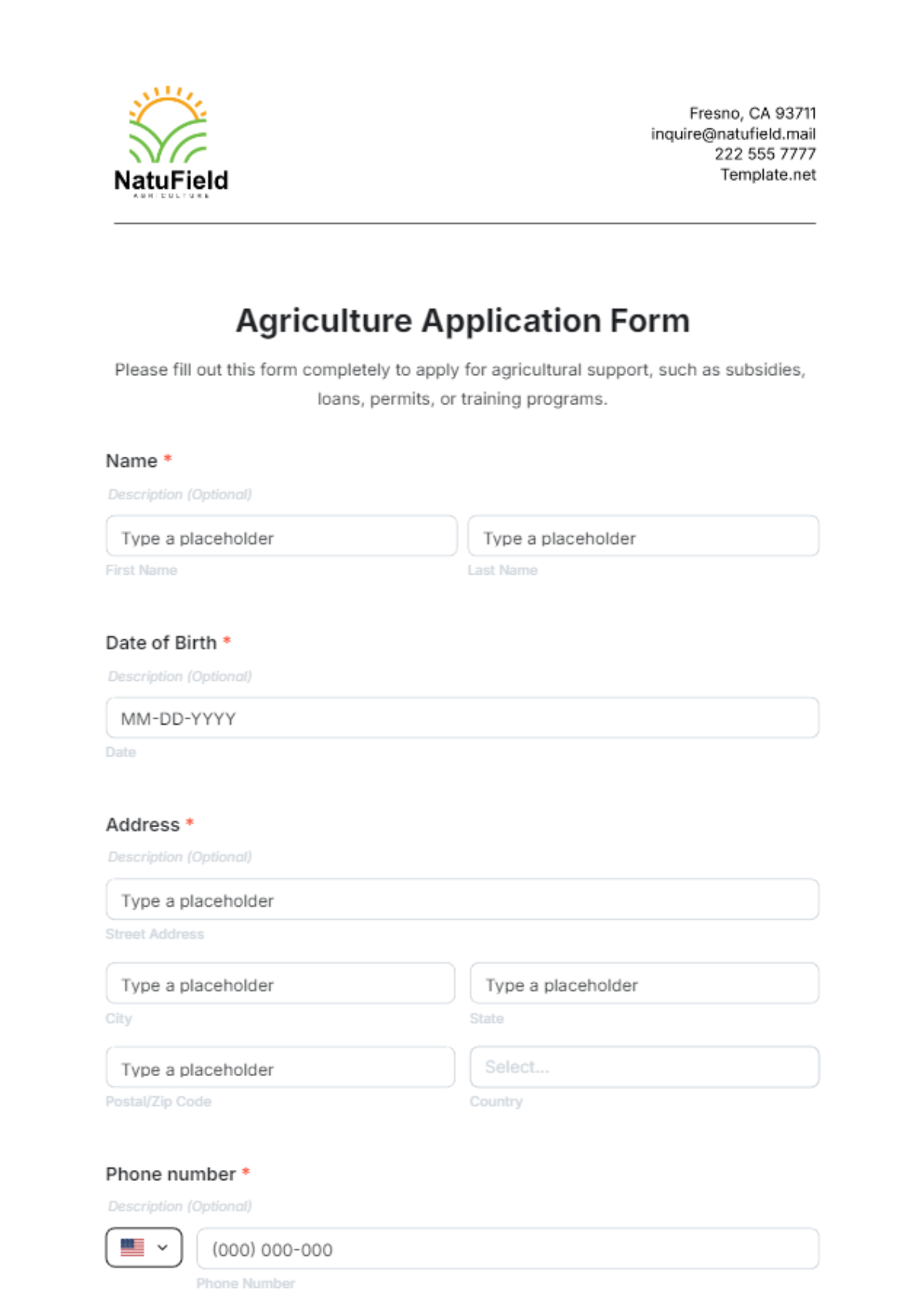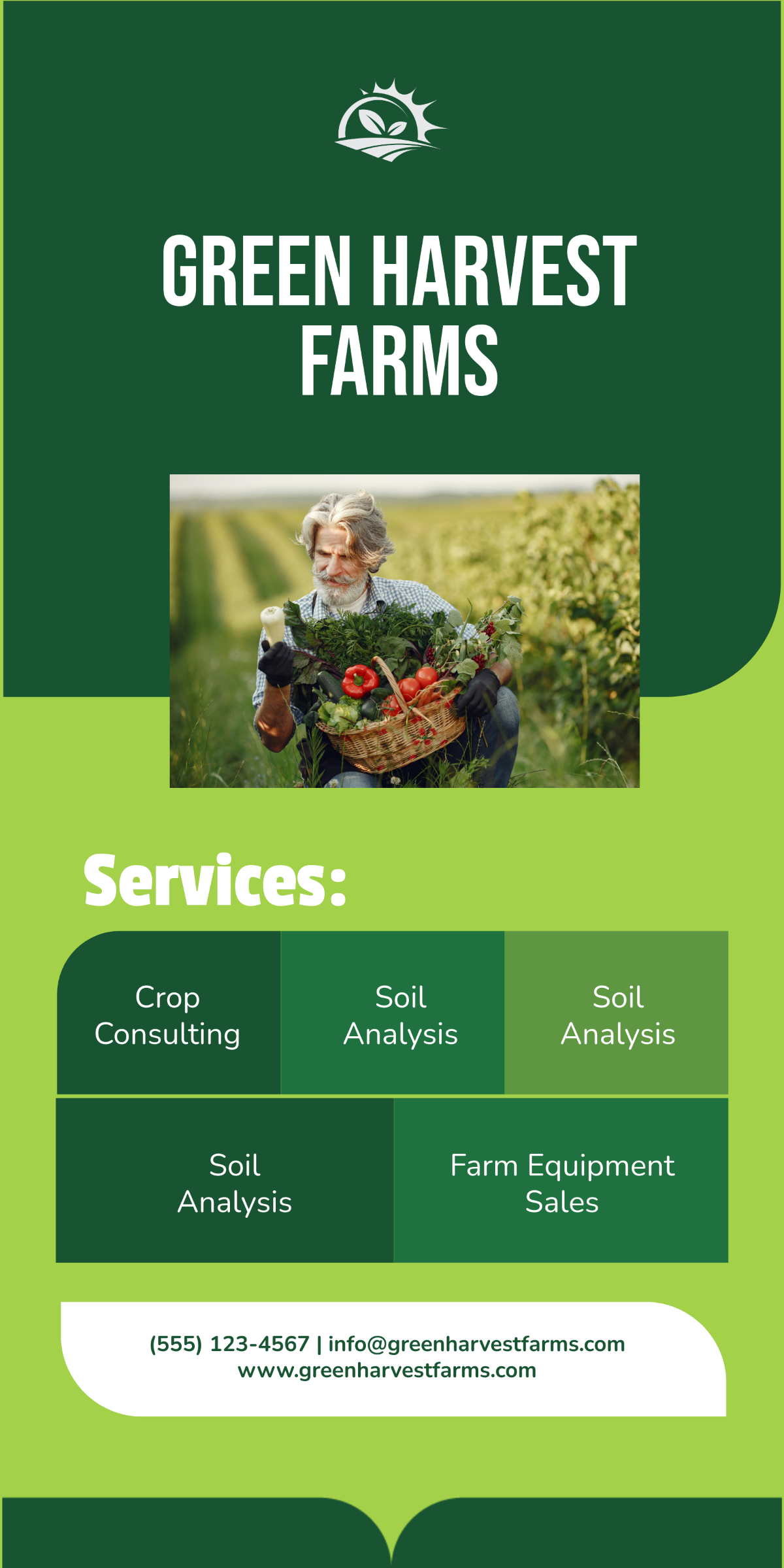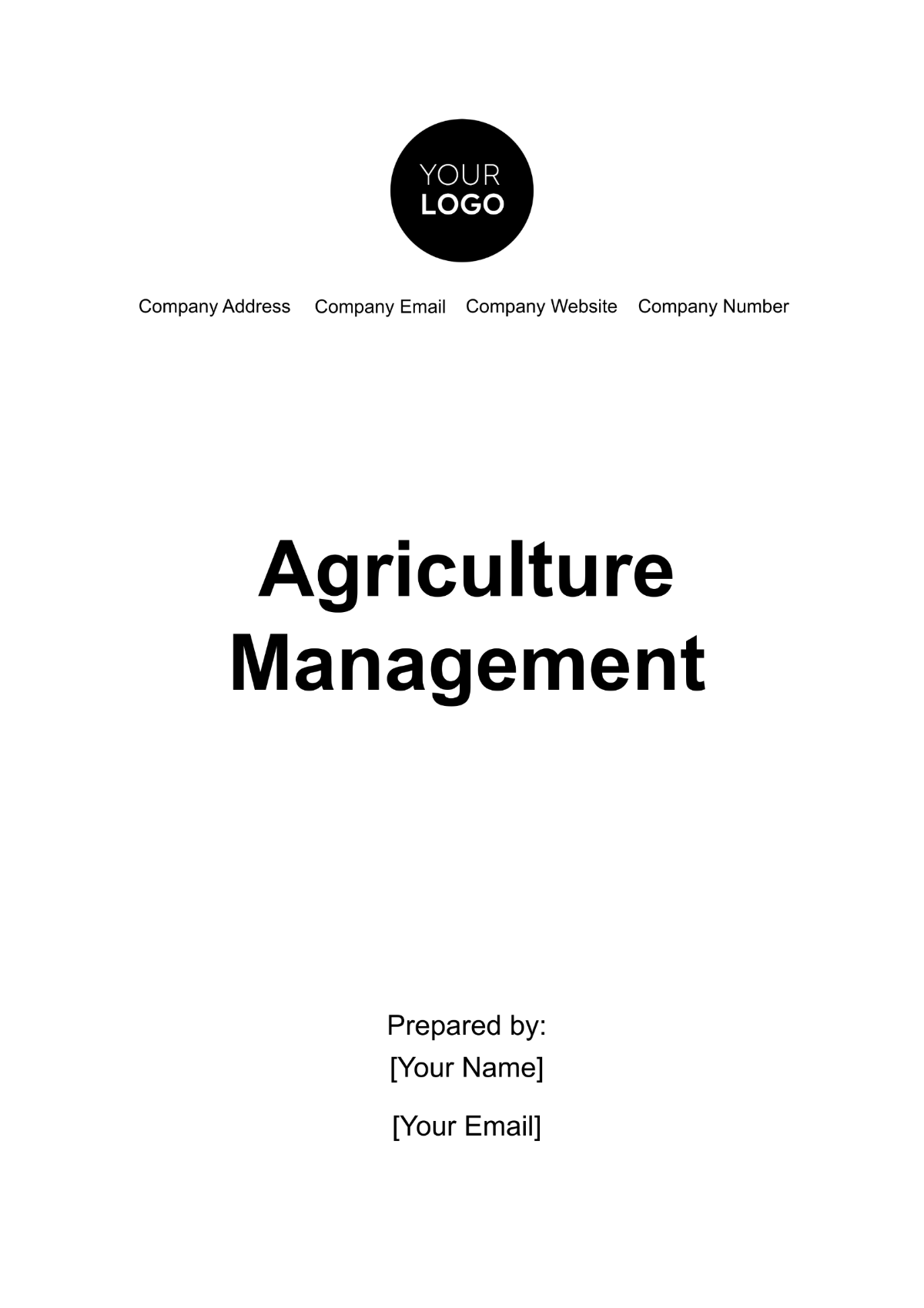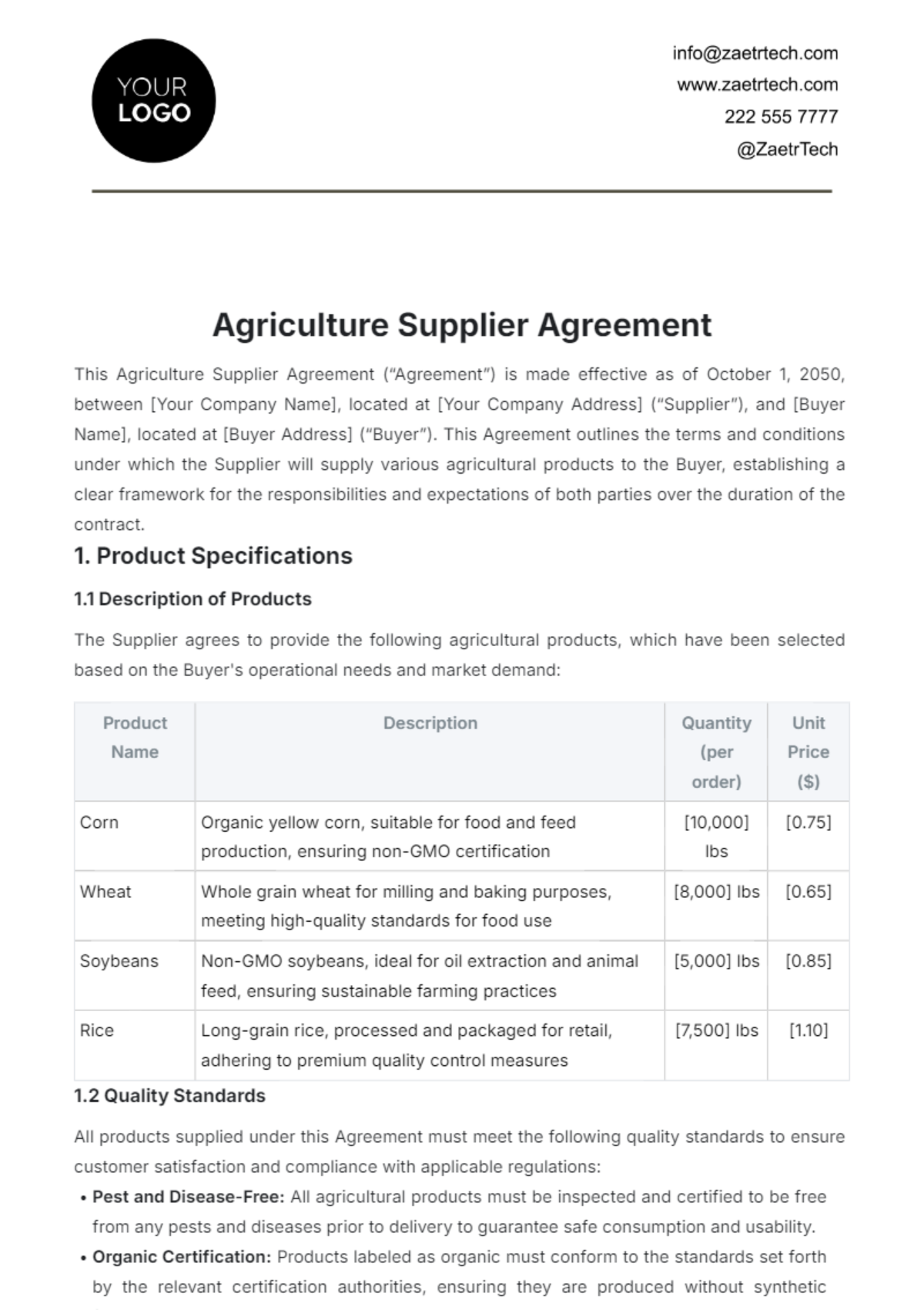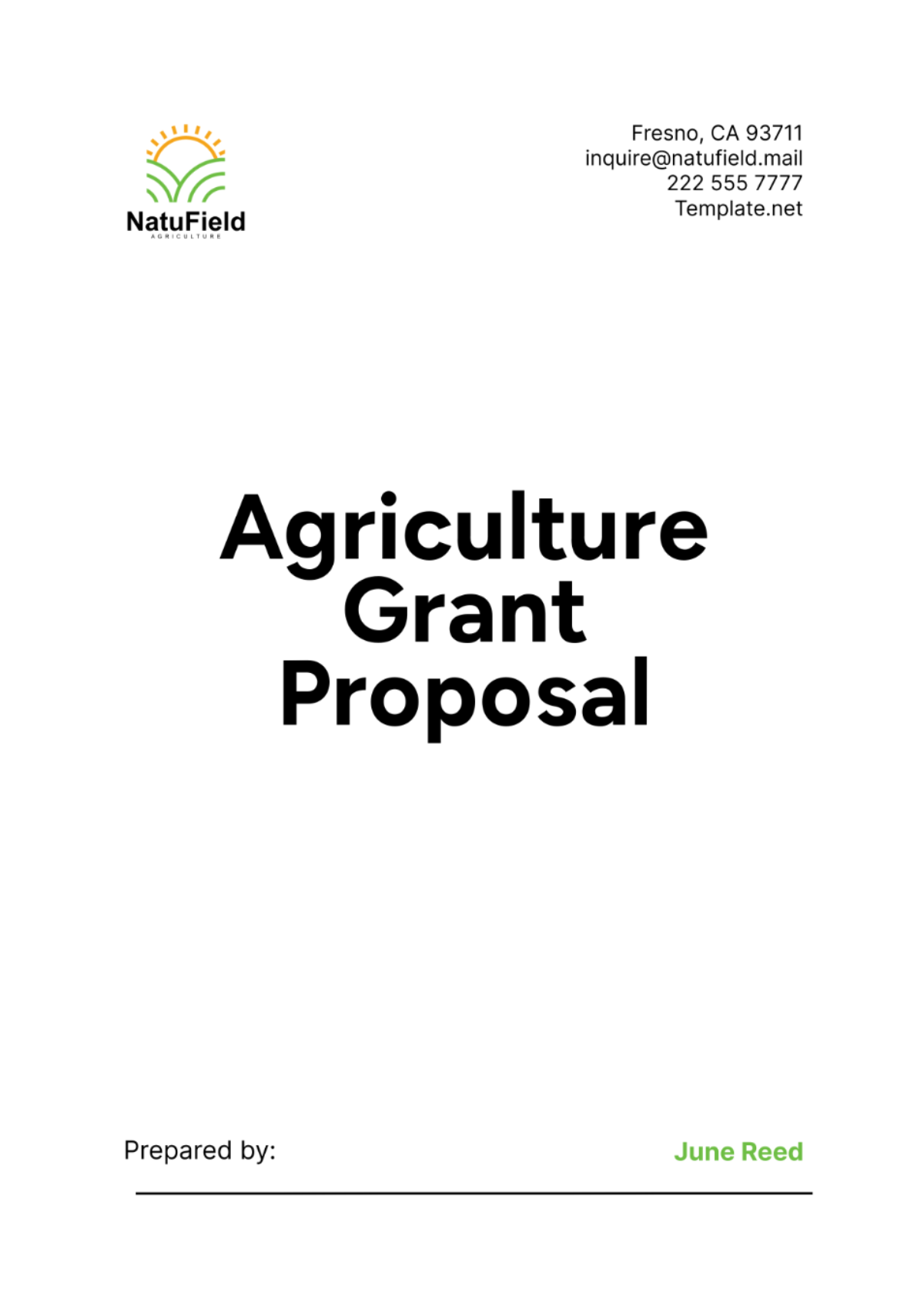Free Agriculture Environmental Risk Management Guide
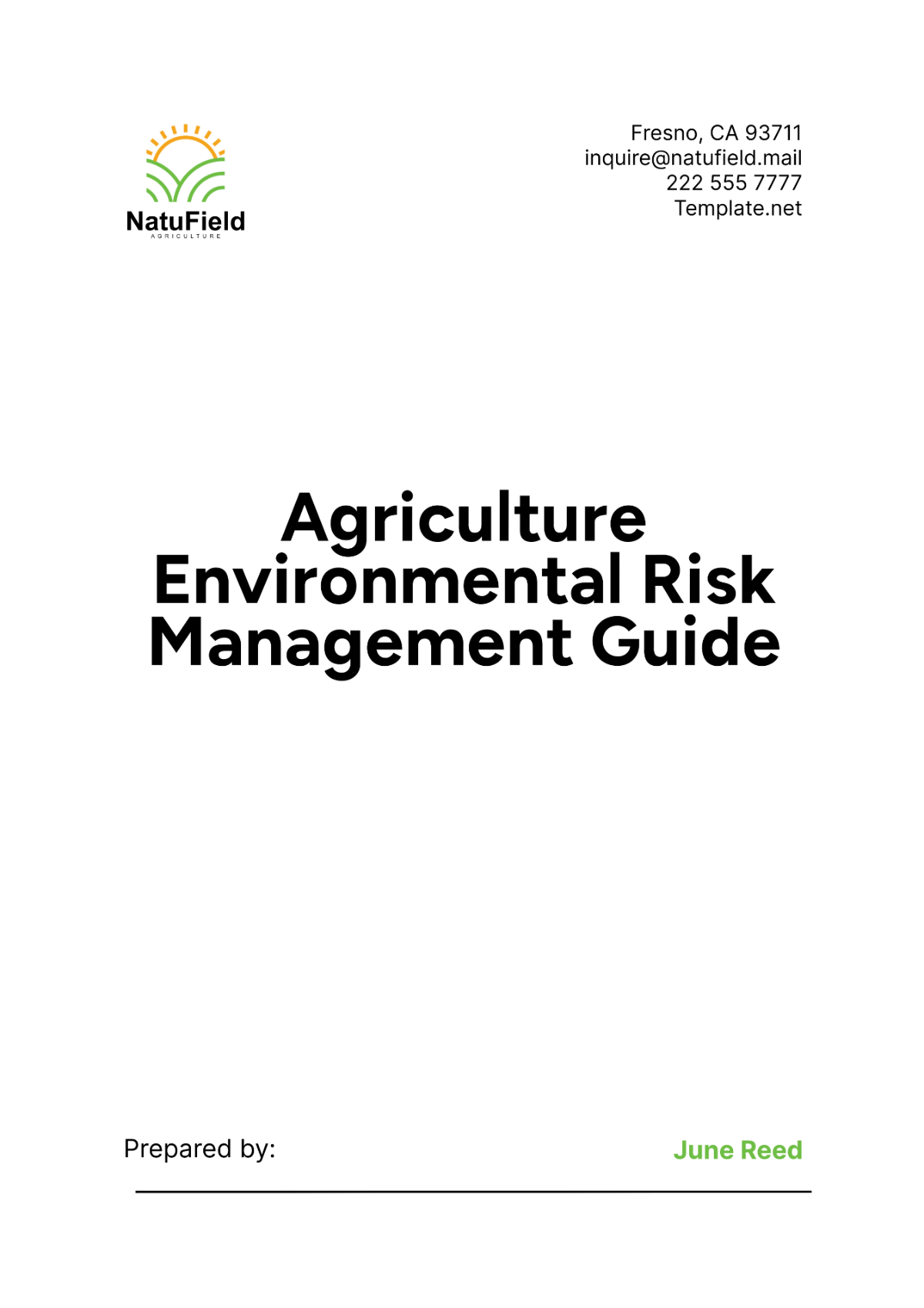
- 100% Customizable, free editor
- Access 1 Million+ Templates, photo’s & graphics
- Download or share as a template
- Click and replace photos, graphics, text, backgrounds
- Resize, crop, AI write & more
- Access advanced editor
Mitigate risks with our Agriculture Environmental Risk Management Guide Template! Available only on Template.net, this template includes editable fields to adapt to your specific risk management needs. Customizable sections allow for easy edits and the AI Editor Tool ensures quick and precise guide creation, providing a comprehensive risk management framework!
You may also like
Agriculture Environmental Risk Management Guide
I. Introduction
This Agriculture Environmental Risk Management Guide of [Your Company Name] is designed to help staff identify, assess, and mitigate environmental risks associated with our agricultural operations. This guide provides practical procedures and tools to ensure environmental protection while maintaining efficient and effective farming practices. Our goal is to promote sustainability, ensure regulatory compliance, and manage risks related to soil, water, air, and biodiversity.
Effective environmental risk management starts with understanding the potential risks and implementing appropriate measures to address them. By following the guidelines outlined in this document, our staff will be equipped to handle environmental challenges and contribute to our commitment to sustainable agriculture. This guide includes clear instructions on how to perform risk assessments, implement best practices, and report environmental issues.
In addition to risk management practices, this guide covers how to maintain compliance with environmental regulations and internal policies. It is essential for staff to familiarize themselves with these procedures to ensure they can perform their duties effectively and contribute to the overall environmental goals of [Your Company Name].
II. Risk Identification and Assessment
A. Identifying Environmental Risks
The following table provides an overview of common environmental risks in agriculture and their potential impacts:
No. | Risk | Description | Potential Impact |
|---|---|---|---|
1 | Soil Erosion | Loss of topsoil due to wind or water erosion. | Decreased soil fertility and yield. |
2 | Water Pollution | Contamination of water sources from runoff or spills. | Harm to aquatic ecosystems and water quality. |
3 | Air Pollution | Emission of dust, gases, and other pollutants. | Health risks to humans and animals. |
4 | Loss of Biodiversity | Decline in plant and animal species. | Disruption of ecosystem balance. |
5 | Chemical Spills | Accidental release of fertilizers or pesticides. | Soil and water contamination. |
Soil Erosion: Soil erosion can result from improper land management or severe weather conditions. It is crucial to implement erosion control measures such as cover cropping and proper tillage to maintain soil health and prevent loss of arable land.
Water Pollution: Water pollution can occur from agricultural runoff containing chemicals or waste. To prevent this, staff should ensure proper waste disposal, use buffers around water bodies, and monitor water quality regularly.
Air Pollution: Air pollution from dust and emissions can affect air quality and pose health risks. Strategies to reduce air pollution include using dust suppressants and maintaining equipment to minimize emissions.
Loss of Biodiversity: Biodiversity loss can disrupt ecosystem services and reduce resilience. To protect biodiversity, staff should adopt practices that support a diverse range of species and habitats.
Chemical Spills: Chemical spills can have severe environmental and health impacts. Staff must follow proper handling procedures and have spill response plans in place to manage accidents effectively.
B. Risk Assessment Procedures
The following table outlines the steps for conducting an environmental risk assessment:
No. | Step | Description | Responsible Party |
|---|---|---|---|
1 | Identify Risks | Recognize potential environmental hazards. | Environmental Manager |
2 | Evaluate Risks | Assess the likelihood and impact of identified risks. | Risk Assessment Team |
3 | Prioritize Risks | Rank risks based on their severity and probability. | Risk Assessment Team |
4 | Develop Mitigation Plans | Create strategies to manage high-priority risks. | Environmental Manager |
5 | Implement Plans | Execute the mitigation strategies. | Staff Members |
6 | Review and Monitor | Continuously evaluate the effectiveness of the plans. | Environmental Manager |
Identify Risks: The first step is to identify potential environmental hazards in agricultural practices. This involves evaluating activities and conditions that could lead to environmental harm.
Evaluate Risks: After identifying risks, assess their likelihood of occurring and potential impact. This step helps determine which risks pose the greatest threat to the environment.
Prioritize Risks: Rank the risks based on their severity and the likelihood of their occurrence. This helps focus resources and efforts on managing the most critical risks.
Develop Mitigation Plans: Create specific strategies to address the highest priority risks. These plans should outline preventive measures and responses to manage risks effectively.
Implement Plans: Put the mitigation strategies into action. Ensure all staff are aware of their responsibilities and the procedures for managing environmental risks.
Review and Monitor: Regularly assess the effectiveness of the risk management plans and make adjustments as needed. This ongoing process ensures that risk management efforts are successful and up to date.
Identifying and assessing environmental risks is the foundation of effective risk management. By understanding the potential hazards and their impacts, staff can develop targeted strategies to address these issues before they escalate. Proper risk assessment also ensures that resources are allocated efficiently to manage the most significant risks.
Regular monitoring and review of risk management practices are essential to adapt to changing conditions and new information. This ongoing process helps maintain environmental compliance and supports the long-term sustainability goals of [Your Company Name].
III. Best Practices for Environmental Protection
A. Soil Conservation Methods
The following table outlines effective soil conservation methods and their benefits:
No. | Practice | Description | Benefits |
|---|---|---|---|
1 | Cover Cropping | Planting cover crops to protect soil. | Reduces erosion, improves soil health. |
2 | Conservation Tillage | Minimal tillage to maintain soil structure. | Reduces erosion, conserves moisture. |
3 | Terracing | Creating terraces on slopes to prevent runoff. | Controls erosion, improves water management. |
4 | Buffer Strips | Planting vegetation around fields and waterways. | Reduces runoff, filters pollutants. |
Cover Cropping: Planting cover crops, such as legumes or grasses, helps protect soil from erosion and improves its health. These crops also enhance soil fertility and structure.
Conservation Tillage: Conservation tillage involves minimal soil disturbance compared to conventional methods. This practice helps maintain soil integrity, reduce erosion, and conserve soil moisture.
Terracing: Creating terraces on sloped fields prevents runoff and reduces soil erosion. Terraces also improve water retention and can enhance crop yields.
Buffer Strips: Establishing vegetative strips around fields and near water sources helps filter pollutants from runoff and reduces soil erosion. Buffer strips also provide habitats for wildlife.
B. Water Conservation Techniques
The following table lists water conservation techniques and their effectiveness:
No. | Technique | Description | Effectiveness |
|---|---|---|---|
1 | Drip Irrigation | Delivering water directly to plant roots. | High efficiency, minimizes water waste. |
2 | Rainwater Harvesting | Collecting and storing rainwater for use. | Reduces reliance on external water sources. |
3 | Mulching | Covering soil with organic or synthetic materials. | Reduces evaporation, conserves moisture. |
4 | Water-efficient Equipment | Using technology to optimize water use. | Reduces water consumption and costs. |
Drip Irrigation: Drip irrigation delivers water directly to the plant roots, which is highly efficient and minimizes water waste. This method allows for precise water application and is ideal for maintaining healthy crops.
Rainwater Harvesting: Collecting and storing rainwater reduces dependence on external water sources. This technique also helps manage water resources during periods of low rainfall.
Mulching: Applying mulch to the soil surface helps conserve moisture by reducing evaporation. Mulching also prevents weed growth and improves soil health.
Water-efficient Equipment: Using advanced irrigation technologies and water-saving devices optimizes water use. This equipment can reduce water consumption and associated costs.
Implementing best practices for soil and water conservation is essential for sustainable agricultural operations. Effective soil conservation methods improve land productivity and protect against erosion, while water conservation techniques ensure efficient resource use and reduce environmental impact.
By adopting these practices, staff can contribute to environmental protection goals and support the overall sustainability efforts of [Your Company Name]. Regular evaluation of these methods ensures they continue to meet environmental standards and support effective risk management.
IV. Environmental Regulations and Compliance
A. Understanding Regulatory Requirements
The following table outlines key environmental regulations affecting agricultural operations and compliance requirements:
No. | Regulation | Description | Compliance Requirements |
|---|---|---|---|
1 | Clean Water Act | Regulates water pollution from agricultural sources. | Obtain permits, manage runoff and discharge. |
2 | Endangered Species Act | Protects threatened and endangered species. | Ensure no harm to listed species or their habitats. |
3 | Resource Conservation and Recovery Act | Manages hazardous waste disposal. | Proper waste handling and disposal procedures. |
4 | National Environmental Policy Act | Requires environmental impact assessments for federal actions. | Conduct assessments and public consultations. |
Clean Water Act: This act regulates water pollution and requires permits for discharges from agricultural activities. Compliance involves managing runoff, treating wastewater, and obtaining necessary permits.
Endangered Species Act: Protects species at risk of extinction and their habitats. Staff must ensure that agricultural practices do not harm these species or disrupt their habitats.
Resource Conservation and Recovery Act: Manages the disposal of hazardous waste. This regulation requires proper waste handling, storage, and disposal procedures to prevent environmental contamination.
National Environmental Policy Act: Mandates environmental impact assessments for federal projects. This involves evaluating potential environmental effects and consulting with the public and stakeholders.
B. Compliance Monitoring and Reporting
The following table outlines procedures for monitoring and reporting environmental compliance:
No. | Activity | Description | Frequency | Responsible Party |
|---|---|---|---|---|
1 | Compliance Audits | Conduct regular audits to ensure adherence to regulations. | Quarterly | Environmental Manager |
2 | Environmental Reporting | Submit reports to regulatory agencies as required. | Annually | Compliance Officer |
3 | Record Keeping | Maintain records of environmental practices and incidents. | Ongoing | Environmental Manager |
4 | Staff Training | Provide training on environmental regulations and procedures. | Semi-Annually | Training Coordinator |
Compliance Audits: Regular audits assess adherence to environmental regulations and identify areas for improvement. These audits are conducted quarterly and ensure that all practices meet regulatory requirements.
Environmental Reporting: Annual reports are submitted to regulatory agencies to demonstrate compliance with environmental regulations. Accurate and timely reporting helps maintain good relationships with regulatory bodies.
Record Keeping: Ongoing maintenance of records related to environmental practices and incidents is crucial. Proper documentation supports compliance efforts and provides a reference for audits and inspections.
Staff Training: Training sessions on environmental regulations and procedures are held semi-annually. These sessions ensure that staff are knowledgeable about their responsibilities and current environmental practices.
Understanding and adhering to environmental regulations is fundamental for successful agricultural operations. Regular compliance monitoring and reporting help ensure that practices meet legal standards and support sustainable agriculture.
By maintaining thorough records and providing regular training, staff can effectively manage environmental risks and stay updated on regulatory changes. This approach supports [Your Company Name]'s commitment to environmental stewardship and regulatory compliance.
V. Environmental Emergency Preparedness
A. Emergency Response Procedures
The following table outlines key steps for environmental emergency response:
No. | Procedure | Description | Responsible Party |
|---|---|---|---|
1 | Emergency Contact List | Maintain a list of contacts for emergencies. | Environmental Manager |
2 | Emergency Drills | Conduct regular drills to practice emergency responses. | All Staff |
3 | Incident Reporting | Report environmental incidents to authorities. | Environmental Manager |
4 | Post-Incident Review | Analyze incidents to improve future responses. | Environmental Manager |
Emergency Contact List: Keep an updated list of contacts for emergency situations, including local environmental agencies and emergency services. This list should be accessible to all staff for quick reference during emergencies.
Emergency Drills: Regular drills help staff practice emergency response procedures and ensure everyone is familiar with their roles. These drills should be conducted at least annually to maintain readiness.
Incident Reporting: Environmental incidents must be reported to the appropriate authorities as required by regulations. Timely reporting is essential for compliance and environmental protection.
Post-Incident Review: After an incident, review the response to identify strengths and areas for improvement. This review helps refine emergency procedures and enhance future responses.
B. Emergency Preparedness Training
The following table lists training programs for environmental emergency preparedness:
No. | Training Program | Description | Frequency | Responsible Party |
|---|---|---|---|---|
1 | Spill Response Training | Training on handling chemical spills. | Annually | Safety Officer |
2 | First Aid Training | Basic first aid and emergency medical response. | Annually | Certified Trainer |
3 | Emergency Procedures Workshop | Workshop on emergency response protocols. | Semi-Annually | Training Coordinator |
4 | Environmental Regulations Overview | Overview of key environmental regulations. | Semi-Annually | Compliance Officer |
Spill Response Training: Annual training on procedures for managing chemical spills ensures staff are prepared for emergency situations. This training covers spill containment, cleanup, and reporting.
First Aid Training: Basic first aid training is provided annually to prepare staff for medical emergencies. This training includes CPR, first aid techniques, and emergency medical response.
Emergency Procedures Workshop: Semi-annual workshops cover emergency response protocols and best practices. These workshops reinforce emergency procedures and update staff on new practices.
Environmental Regulations Overview: A semi-annual overview of key environmental regulations helps staff stay informed about legal requirements. This training ensures that staff understand their regulatory responsibilities.
Effective emergency preparedness is crucial for managing environmental incidents and minimizing their impact. Regular training and drills ensure that staff are well-prepared to handle emergencies and comply with legal requirements.
Maintaining up-to-date emergency response plans and conducting training programs support a proactive approach to environmental risk management. This approach enhances [Your Company Name]'s resilience to environmental challenges.
VI. Environmental Performance Monitoring
A. Monitoring Environmental Indicators
The following table lists key environmental indicators for performance monitoring:
No. | Indicator | Measurement Method | Frequency | Responsible Party |
|---|---|---|---|---|
1 | Soil Quality | Soil tests for nutrients and pH levels. | Quarterly | Soil Scientist |
2 | Water Quality | Testing for contaminants in water sources. | Monthly | Water Quality Specialist |
3 | Air Quality | Measuring particulate matter and gases. | Quarterly | Environmental Manager |
4 | Biodiversity Levels | Surveys of plant and animal species. | Annually | Ecologist |
Soil Quality: Regular soil tests measure nutrient levels and pH to assess soil health. Quarterly tests provide data for maintaining soil fertility and guiding management practices.
Water Quality: Monthly water tests check for contaminants in water sources used for irrigation. This monitoring ensures that water quality meets safety standards and does not harm the environment.
Air Quality: Quarterly measurements of air pollutants help track and manage air quality. Monitoring particulate matter and gases ensures that emissions stay within regulatory limits.
Biodiversity Levels: Annual surveys of plant and animal species assess the health of ecosystems. This indicator helps evaluate the effectiveness of biodiversity conservation efforts.
B. Performance Evaluation and Reporting
The following table outlines procedures for evaluating and reporting environmental performance:
No. | Activity | Description | Frequency | Responsible Party |
|---|---|---|---|---|
1 | Performance Reviews | Review environmental performance data. | Semi-Annually | Environmental Manager |
2 | Performance Reports | Prepare reports summarizing performance outcomes. | Annually | Environmental Manager |
3 | Goal Setting | Establish new environmental performance goals. | Annually | Environmental Manager |
4 | Stakeholder Feedback | Collect and review feedback from stakeholders. | Semi-Annually | Environmental Manager |
Performance Reviews: Semi-annual reviews of environmental performance data assess progress towards environmental goals. These reviews help identify successes and areas for improvement.
Performance Reports: Annual reports summarize environmental performance outcomes and achievements. These reports provide transparency and accountability to stakeholders.
Goal Setting: New environmental performance goals are established annually based on review outcomes. Setting goals helps drive continuous improvement and address emerging environmental challenges.
Stakeholder Feedback: Collecting feedback from stakeholders helps gauge the effectiveness of environmental practices and identify potential improvements. This feedback process occurs semi-annually.
Monitoring and evaluating environmental performance are essential for measuring the success of risk management efforts. By regularly reviewing data and setting new goals, staff can drive continuous improvement and maintain high environmental standards.
Performance evaluations and stakeholder feedback ensure that [Your Company Name] meets its environmental objectives and adapts to changing conditions. This process supports long-term sustainability and compliance with environmental regulations.
VII. Environmental Best Practices and Procedures
A. Implementing Best Practices
The following table provides a summary of best practices for environmental management in agriculture:
No. | Practice | Description | Benefits |
|---|---|---|---|
1 | Integrated Pest Management | Combining biological, cultural, and chemical methods for pest control. | Reduces reliance on chemicals, promotes sustainable pest management. |
2 | Organic Farming | Using organic methods for soil fertility and pest control. | Improves soil health, reduces chemical use. |
3 | Sustainable Crop Rotation | Rotating crops to improve soil health and reduce pests. | Enhances soil fertility, reduces pest populations. |
4 | Energy Efficiency | Implementing energy-saving practices and technologies. | Lowers energy costs, reduces carbon footprint. |
Integrated Pest Management: This approach integrates various pest control methods to reduce reliance on chemicals. It includes biological controls, cultural practices, and targeted chemical applications.
Organic Farming: Organic farming uses natural methods for pest control and soil fertility. This practice avoids synthetic chemicals and promotes long-term soil health.
Sustainable Crop Rotation: Rotating crops helps maintain soil health and manage pests. This practice prevents soil depletion and supports sustainable agricultural practices.
Energy Efficiency: Implementing energy-efficient technologies and practices reduces energy consumption and costs. Energy efficiency also lowers greenhouse gas emissions.
B. Documenting Environmental Procedures
The following table lists essential documents for managing environmental procedures:
No. | Document | Purpose | Responsible Party |
|---|---|---|---|
1 | Environmental Policy | Outlines company’s environmental commitments. | Environmental Manager |
2 | Procedure Manuals | Detailed procedures for environmental practices. | Environmental Manager |
3 | Incident Reports | Documentation of environmental incidents. | All Staff |
4 | Training Records | Records of staff training sessions. | Training Coordinator |
Environmental Policy: This document outlines [Your Company Name]'s environmental commitments and objectives. It serves as a foundation for all environmental practices and procedures.
Procedure Manuals: Manuals provide detailed instructions for implementing environmental practices. These documents ensure that staff follow consistent procedures and best practices.
Incident Reports: Incident reports document environmental issues and responses. Accurate reporting helps track incidents and inform future practices.
Training Records: Records of training sessions document staff participation and completion. Maintaining these records supports compliance efforts and ensures that staff receive necessary training.
Implementing best practices and documenting procedures are key to effective environmental management. Best practices support sustainable agricultural operations, while well-documented procedures ensure consistent application of environmental measures.
Maintaining thorough documentation and following best practices help [Your Company Name] achieve its environmental goals and comply with regulations. This approach fosters a culture of environmental stewardship and continuous improvement.
VIII. Community Engagement and Environmental Awareness
A. Community Outreach Programs
The following table lists community outreach programs focused on environmental education:
No. | Program | Description | Target Audience |
|---|---|---|---|
1 | Environmental Workshops | Workshops on sustainable farming practices. | Local Farmers |
2 | School Education Programs | Environmental education for students. | Local Schools |
3 | Community Clean-Up Events | Events to clean up local environments. | General Public |
4 | Volunteer Opportunities | Opportunities for community members to volunteer. | Community Members |
Environmental Workshops: Workshops educate local farmers on sustainable practices. These programs provide practical information and support for implementing eco-friendly farming techniques.
School Education Programs: These programs offer environmental education to students. They aim to raise awareness about environmental issues and promote sustainable practices from a young age.
Community Clean-Up Events: Events that involve the community in cleaning local environments. These activities foster a sense of environmental responsibility and contribute to community well-being.
Volunteer Opportunities: Providing volunteer opportunities for community members to participate in environmental projects. These opportunities engage the community in environmental conservation efforts.
B. Promoting Environmental Awareness
The following table outlines methods for promoting environmental awareness:
No. | Method | Description | Responsible Party |
|---|---|---|---|
1 | Environmental Campaigns | Public campaigns to raise awareness of environmental issues. | Public Relations Officer |
2 | Social Media Engagement | Using social media platforms to share environmental tips and updates. | Social Media Manager |
3 | Newsletter Updates | Regular newsletters with environmental news and tips. | Communications Coordinator |
4 | Environmental Awards | Recognizing achievements in environmental sustainability. | Environmental Manager |
Environmental Campaigns: Public campaigns raise awareness of environmental issues and promote sustainable practices. These campaigns use various media to reach a broad audience.
Social Media Engagement: Social media platforms are used to share environmental tips and updates. Engaging with followers online helps spread environmental awareness and foster community involvement.
Newsletter Updates: Regular newsletters provide updates on environmental initiatives and offer practical tips. These updates keep stakeholders informed and engaged with [Your Company Name]'s environmental efforts.
Environmental Awards: Awards recognize achievements in environmental sustainability. These awards celebrate success and encourage continued commitment to environmental practices.
Community engagement and environmental awareness are essential for building public support and fostering a culture of environmental responsibility. Outreach programs and awareness initiatives help educate the public and promote sustainable practices.
By actively engaging with the community and raising environmental awareness, [Your Company Name] can strengthen its environmental stewardship efforts and support broader sustainability goals.
IX. Review and Update
A. Review
The management will:
Annual Review of the Guide: Review the entire guide annually to assess its relevance and effectiveness. This review will ensure that all procedures align with current environmental regulations and best practices.
Assess Feedback from Staff: Collect feedback from staff on the guide’s usability and effectiveness. This feedback helps identify areas for improvement and ensures the guide addresses staff needs.
Evaluate Compliance with Regulations: Check if the guide meets current environmental regulations and legal requirements. Ensure that any changes in laws or regulations are incorporated into the guide.
Review Performance Data: Analyze environmental performance data from previous periods. This review helps evaluate the success of risk management strategies and identify areas for improvement.
Identify Best Practices and Emerging Trends: Research new best practices and emerging trends in environmental risk management. Incorporate relevant practices to keep the guide up-to-date with the latest advancements.
B. Update
The update process of the document:
Draft Necessary Revisions: Prepare updates to the guide based on review findings and regulatory changes. Draft revisions should address identified gaps and incorporate new best practices.
Obtain Approval for Revisions: Submit the draft revisions to senior management for approval. Ensure that all proposed changes align with [Your Company Name]’s policies and objectives.
Communicate Updates to Staff: Inform staff about the approved updates and provide training on any new procedures. Effective communication ensures that staff understand and implement the changes.
Implement the Approved Revisions: Apply the approved changes to the guide and update all relevant documents. Ensure that the revised guide is distributed to all staff and made accessible for reference.
Monitor Implementation Effectiveness: Track the effectiveness of the new updates and gather feedback from staff. Use this information to make further adjustments and improve the guide as needed.
